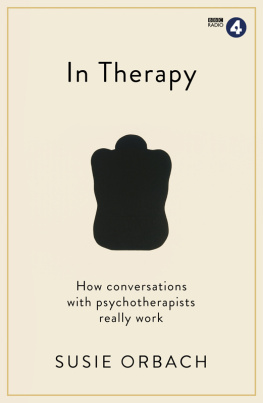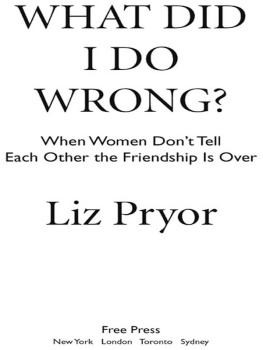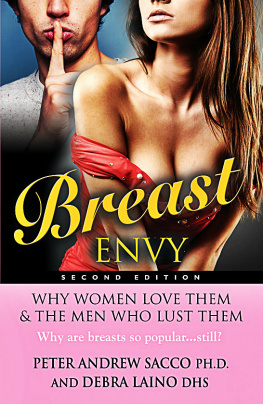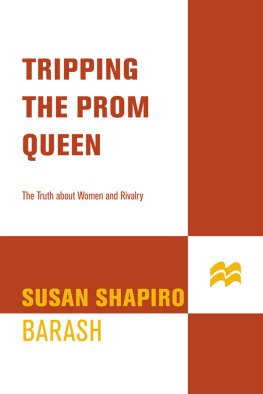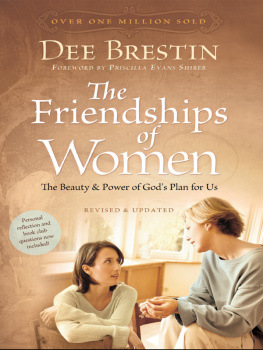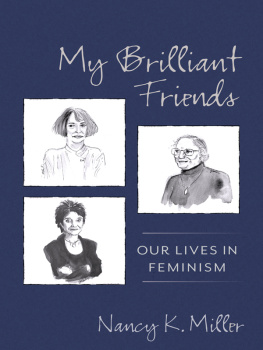BETWEEN WOMEN
Love, envy and competition in womens friendships
Susie Orbach and Luise Eichenbaum
* * *
This book is written in recognition of our relationship, our deep love for one another and in the hope that it will speak to other women.
Contents
Authors Note
T his book is an attempt to provide a feminist psychoanalytic understanding of the emotional and psychological processes that are set in train when women perceive differences in each other. It is about the difficulties women face in coming to terms with those differences. We hope it will enable women to handle those differences more productively and less destructively than is often the case at present.
It is not an account of differences between women. We have not attempted to discuss the particulars of class, race, and sexual orientation as they create divisions between women. Differences in background and in status are of course substantial and contribute to the hurt, the misunderstandings, and the anger frequently found in womens relationships today. The assumptions we make about one another often do not take account of these particular circumstances. The expectations, desires, and ambitions we have for ourselves are based on a perception of the world seen from the vantage point of an individuals class background, her economic situation, her sexual orientation, her race, the attitudes of her family, her age, her physical abilities and disabilities. We are often blind and ignorant vis--vis experiences dissimilar to our own; we may deny differences, we may misperceive the circumstances of others or, in our ignorance, we may collude with stereotypes. Certainly lesbians, working-class women, black women, and disabled women have suffered by being described thoughtlessly and stereotypically. Many women are often unwittingly written out of general accounts of womens psychology because of a failure to include them by referring either to the commonality of womens experience or to the particulars of their experience.
We hope that we are writing for all women, but we well understand that our conclusions reflect the scope and the limits of our clinical work in the United Kingdom and the United States. We write about the women we have met in the course of our work: women who come from a wide range of backgrounds, differing political persuasions and sexual orientations. We have worked with women mainly white, but some black, between the ages of twenty and sixty. Some have had no formal education past sixteen, others are first-generation, educated working class; many are newly professional women, and many are or have been housewives; some are unemployed, while others are involved in their own or their husbands businesses. Family circumstances have varied just as widely. Some women, heterosexual and lesbian, live on their own, some live with their children, some live with their male or female partners children, some are divorced. We have encountered these women in long-term psychotherapy, in short-term therapy, in couple therapy, in workshop settings, in conferences, and in work-based consultations.
We very much hope that women of all backgrounds, sexual orientations, and ages will find points of identification with the women we are writing about even if their own particular circumstances are not adequately described. We hope women will be able to read this as an inclusive account, and take what may be useful in our analysis into their own situation where specific differences in social and personal categories can be explored in more detail.
Acknowledgments
T he authors would like to thank Gillian Slovo, Joseph Schwartz, and Caradoc King for their enthusiasm and labor at the beginning of the project, and Jeremy Pikser for his constructive comments, time, and energy in the last push.
Introduction
W hen we met forty years ago, when Luise was nineteen and Susie twenty-five, we had the air of free women about ourselves. We were full of the headiness of the early days of feminism and we involved ourselves in projects that would benefit women. We spent much of our time with other women learning and developing the new field of womens studies, discovering together a new way to see our personal histories and challenging our responses to almost everything. With a sense of risk and excitement, we gave our female friendships priority.
The world of the early 1970s in which we met turned our lives and our views of most things upside down. As a generation we put into practice ideas that had been beyond our imagination just a few years before. As students, our time was flexible. We spent whole days and nights with our friends, secure in the knowledge that our love affairs with men would coexist with our important female friendships, and that, if necessary, it was the men who would have to adjust and change in dramatic ways.
We remember the first times we saw each other at Richmond College of the City University of New York. Susie was in a colloquium. A young woman, an undergraduate, read a paragraph she had prepared for an upcoming event to celebrate International Womens Day 1971. It was a powerful and passionate statement. Susie turned to her friend Carol Bloom, the Womens Studies coordinator. That was good, she said. Who is she? Oh, thats Luise Eichenbaum, shes in Womens Studies too.
And then, at a class on women in film, a young woman with a long suede skirt, tall purple boots, a trendy London shag haircut, an English accent, confidently commented on the film and what it had to say about womens lives. Who is she? Luise asked Carol. Thats Susie Orbach, replied Carol. Shes English and into politics and law and psychology. Luise was interested.
A friendship was about to begin that would affect us in profound ways for the next decade and throughout our lives. The special bond that formed in the earliest years of our friendship and the intensity of feeling between us still continues. The desire to chatter and share, to fill each other in on everything and seek each others views is constant. Like women all over the world, we practice that particularly feminine skill of holding ten conversations and activities in our heads at the same time.
Our common work at the beginning of our friendship involved helping to build the Womens Studies Program. With our dearest friend Carol Bloom and the other women in the department we were engaged in creating the first baccalaureate degree in this new field. It was an energetic department that for a brief time expressed the very best energy of the Student and Womens Liberation Movements. Students became teachers, social barriers began to disintegrate, and women began to study and learn together in circumstances of their own creation. It was an exciting time. New educational policy was being made and we were doing the making.
But the program itself was headed for unanticipated difficulties. It had come into existence against strong opposition from the college administration. The reality of a successful program soon gave way to internal dissension and strife. The unity among the women that had been so essential to the successful launch of the program crumbled. It was a unity based on opposition to the administration rather than the expression of well-conceived and commonly held educational ideas. Political differences assumed tremendous significance and caucuses soon formed. Three factions disputed the direction of the program, crippling it. Meetings were rife with betrayal and anger. The women, all unused to wielding power within an institutional setting, seemed set upon destroying their common project.
We were shocked, devastated, and shaken. How could women, apparently with so much in common, be so destructive? How had our unity turned into a confrontation so very fast? What was the origin of the rage and disappointment that this dispute unleashed?


